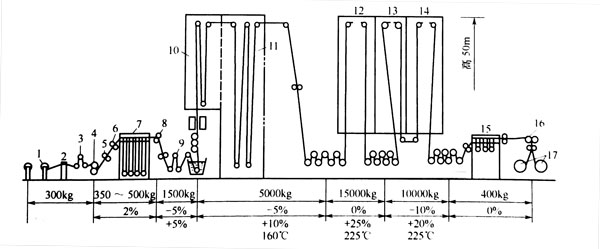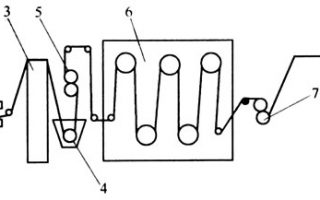The nylon cord has high heat shrinkage. In order to ensure the dimensional stability of the cord, it is necessary to perform heat stretching treatment before rolling, and a certain tension is applied to the cord during the rolling process to prevent heat shrinkage deformation. Although the dimensional stability of the polyester cord is much better than that of nylon, it should be treated to further improve its dimensional stability.
The thermal stretching process is usually carried out in three steps.
The first step is the hot stretch zone, in which the cord is at a temperature above its softening point and subjected to a large tension, and the macromolecular chain is stretched and oriented to further increase the degree of orientation and crystallinity. The temperature, the length of the tension and the length of the action vary depending on the fiber type.
The second step is a heat setting zone. The temperature is the same as or lower than the heat extension zone by 5 to 10 ° C. The tension is slightly lower and the action time is the same as that of the heat extension zone. Its main function is to eliminate the residual internal stress at high temperature, while maintaining the tensile orientation and crystallization degree of the macromolecular chain, so as to ensure that the cord does not shrink after the tension is lost.
The third step is the cold setting zone. The cord is cooled to a normal temperature range below its glass transition temperature under the condition that the cord tension is kept constant, so that the orientation and crystal state of the macromolecular chain are fixed. The cord dimensional stability is improved.


